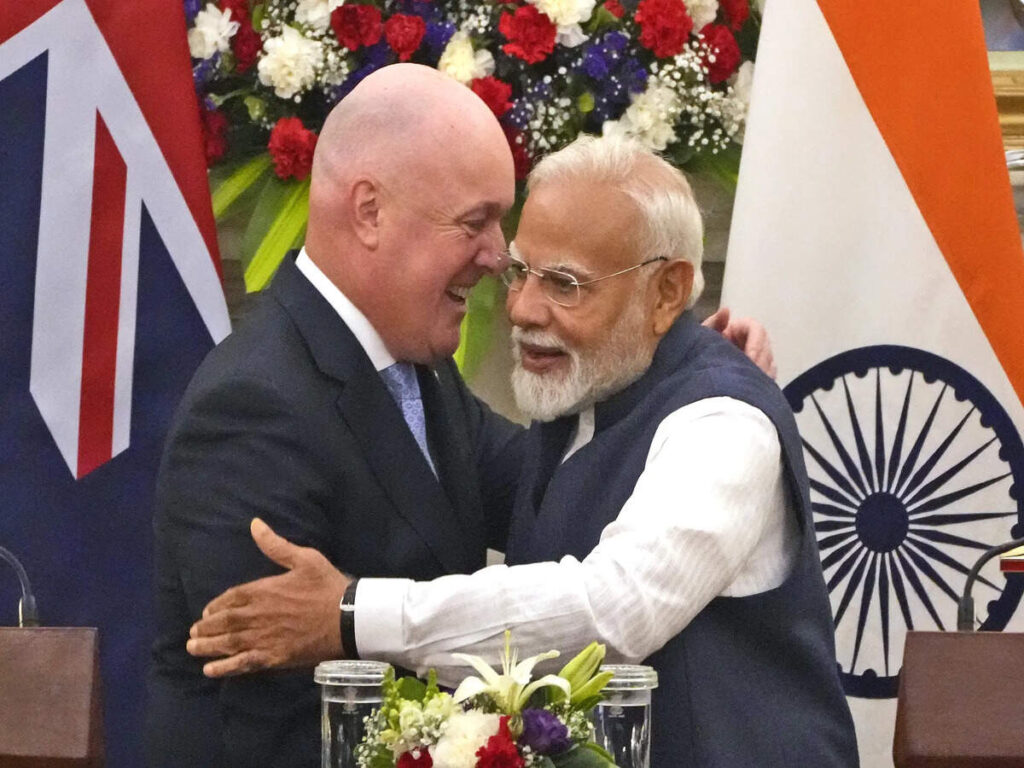NEW DELHI: Working against a tight deadline, India and New Zealand on Friday wrapped up the first round of negotiations on a bilataral Free Trade Agreement (FTA). The round that started on May 5 discussed the broad contours of the agreement.
The two countries decided in March to re-launch negotiations on FTA during New Zealand Prime Minister Christopher Luxon to New Delhi. For the conclusion of the talks both sides set a deadline of 60 days from the beginning of the negotiations.
It is the second attempt by both countries to strike a trade deal. Through the deal they are aiming to grow their trade 10-fold in the next 10 years. In April-February of 2024-25 the bilateral trade stood at $ 1.2 billion with India’s exports at $ 644 million and imports at $ 546 million..
The first attempt for FTA lasted from 2010 to 2015. During that period 10 rounds of negotiations were held before that. One of the key sticking points in the FTA is New Zealand’s demand for access to Indian dairy markets. Dairy along with agriculture is the most sensitive area to negotiate. In no FTA that India has signed so far has it agreed to open the dairy sector. Even in the India-UK FTA, which was finalised earlier this week, dairy has been kept out.
Currently, India’s dairy imports from New Zealand are minimal (around $0.57 million), and while India may consider limited imports of value-added dairy products, it remains firm against allowing raw dairy imports.
It is also reluctant to lower tariffs on New Zealand’s meat, and wine exports. Another key issue was India’s demand for easier movement of its skilled professionals and better access for its IT and services sector. India wanted New Zealand to grant work opportunities similar to those given to Australia and China, but New Zealand did not agree.
In the UK FTA, India has got a liberal visa regime for its professionals and the social security agreement has given another boost to the services sector in the UK. The India-New Zealand FTA situation was further complicated by negotiations around the Regional Comprehensive Economic Partnership (RCEP), which India eventually withdrew from in 2019 due to similar concerns about market access and protecting local industries.
“A major challenge in the renewed talks will be the disparity in tariff structures. New Zealand’s average import tariff is only 2.3%, with over half of its tariff lines already duty-free, meaning Indian goods already have substantial access to its market. In contrast, India’s average tariff stands at 17.8%, meaning it would have to make significant reductions, making a traditional FTA less attractive for India,” founder of Global Trade Research Initiative Ajay Srivastava said.
India’s key goods exports to New Zealand include clothing, fabrics, and home textiles; medicines and medical supplies; refined petrol; agricultural equipment and machinery such as tractors and irrigation tools; auto; iron and steel; paper products; electronics; shrimps; diamonds; and basmati rice.
The main imports are agricultural goods, minerals, apples, kiwifruit, meat products such as lamb, mutton, milk albumin, lactose syrup, coking coal, logs and sawn timber, wool, and scrap metals. In FY24, India’s services exports to New Zealand stood at $ 214.1 million, while imports were $ 456.5 million.
India’s key services exports include IT and software services, provided by companies such as Infosys and HCL, along with telecommunications services to support New Zealand’s digital infrastructure. India also exports healthcare services, including medical tourism, pharmaceutical research, and telemedicine. Financial services are another important area, with Indian banks and fintech companies offering digital payment solutions.
New Zealand’s services exports to India are led by education services, with thousands of Indian students pursuing higher education in New Zealand. Tourism services are also significant.
Source: The Financial Express

 SEBI Proposes New Disclosure Norms For Governance By High Value Debt Listed Entities In India
SEBI Proposes New Disclosure Norms For Governance By High Value Debt Listed Entities In India 